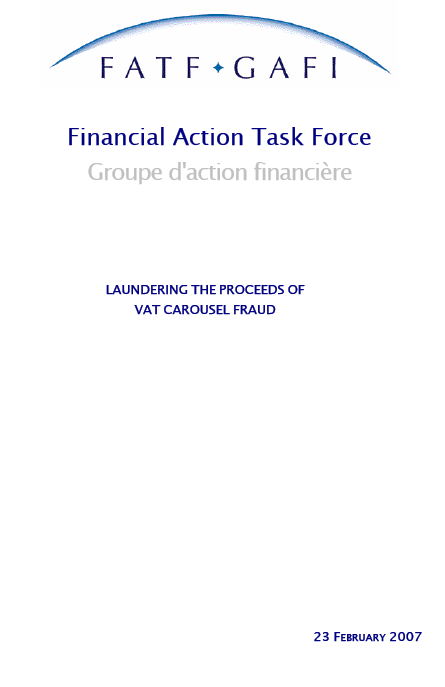22 February 2007 - VAT carousel fraud involves an organised criminal attack on common duty tax systems to defraud governments of money that should be paid in VAT. The activity is characterised by fraudulent VAT claims made when goods cross a common duty area border.
An initial, illegal, profit can be generated by selling goods and charging VAT, but not forwarding this payment on to any government in the duty area. A further profit is made by moving the goods to another jurisdiction in the common area and fraudulently reclaiming VAT. Goods can then be moved again to another jurisdiction in the common area and the fraud can go through a further loop or carousel charging and claiming VAT fraudulently as the goods move around a carousel – hence the name carousel fraud .
Certain types of goods are used mobile phones or computer chips, or goods that are low bulk, high value and readily available in large quantities – so they can be moved quickly and easily and can be sold at a profit.
Substantial proceeds can be earned by well organised VAT Carousel frauds. These schemes can also be used to launder and/or raise funds for investment in other types of crime. This project used the European Union as an example region. However, the project team also discovered cross border schemes operating in other countries such as Mexico and the Ukraine . The findings of this study may also be relevant to other countries with common duty agreements.
The report identifies the global impact of money laundering generated by the fraud and details the characteristics of the money laundering cycle from the proceeds of the fraud to investment into legitimate economy. It explores a number of ways in which the private sector and governments can combat these money laundering schemes.
The project identified several key findings:
- Billions of dollars from VAT carousel fraud move through the international banking system. The main pattern is that all transactions within a chain may use the same banking institution. However, intelligence is limited on how and where associated profits are laundered. It is, therefore, essential that the appropriate agencies are made aware of this activity to enable them to investigate the associated money laundering;
- Serious organised crime groups are involved in carousel fraud either using it to raise funds or to launder the proceeds of other criminal activity such as drugs smuggling;
- The impact from the associated money laundering has a global reach and it is therefore necessary for countries to work together to provide a global response;
- Indicators of money laundering the proceeds of carousel fraud (these can be found on page 15 of the report).


 Twitter
Twitter
 Facebook
Facebook
 Instagram
Instagram
 Linkedin
Linkedin
